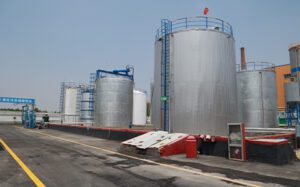Polyvinylidene Difluoride (PVDF) is a fluoropolymer that stands out in the world of materials science due to its unique properties and diverse range of applications. In this in-depth article, we will explore how PVDF compares to other fluoropolymers, examining the advantages and distinct qualities that set it apart. This analysis will provide valuable insights into the selection of fluoropolymers for various industrial and commercial purposes.
Introduction to PVDF and Other Fluoropolymers
PVDF maintains its structural integrity at a wide range of temperatures, demonstrating its impressive thermal stability. This property is a key advantage in applications subjected to extreme heat or cold.
Comparing with FEP and PTFE
Fluorinated Ethylene Propylene (FEP) and PTFE are other notable fluoropolymers with good heat resistance. However, PVDF’s balance of thermal stability and mechanical strength makes it a valuable choice in scenarios where both properties are critical.
Properti Listrik

PVDF’s Exceptional Dielectric Performance
PVDF serves as an excellent electrical insulator, with a high dielectric constant and low dissipation factor. These qualities make it indispensable in the electronics industry, where precise electrical properties are paramount.
Comparing with PTFE
PTFE also exhibits excellent electrical insulating properties. However, PVDF’s piezoelectric behavior sets it apart, enabling its use in sensors and transducers, a capability not shared by PTFE.
Piezoelectric Behavior
PVDF’s Unique Piezoelectric Trait
PVDF’s piezoelectric behavior allows it to generate an electric charge when subjected to mechanical stress or pressure, and vice versa. This unique property is harnessed in a wide array of applications, including sensors, actuators, and ultrasound devices.
Comparing with Other Fluoropolymers
Most other fluoropolymers lack piezoelectric properties. PVDF’s distinct advantage in this area makes it an ideal choice when precise measurements and responsiveness to mechanical stimuli are required.
Applications of PVDF vs. Other Fluoropolymers
Pengolahan Kimia
PVDF’s Role
PVDF’s exceptional chemical resistance positions it as a preferred material for lining pipes, tanks, and vessels in chemical processing plants.
Comparing with PTFE and FEP
PTFE and FEP also find applications in chemical processing due to their chemical resistance. However, PVDF’s mechanical strength can provide an edge in scenarios involving abrasion and wear.
Electrical and Electronics
PVDF’s Dominance
In the electronics industry, PVDF is celebrated for its outstanding electrical properties and piezoelectric behavior, leading to applications in capacitors, sensors, and ultrasonic devices.
Comparing with PTFE
While PTFE shares excellent electrical insulating properties, it lacks piezoelectricity, making PVDF the preferred choice in specific electronic applications.
Alat kesehatan
PVDF’s Significance
PVDF’s biocompatibility is highly valued in medical devices, including implants, catheters, and sensors.
Comparing with PTFE and FEP
PTFE and FEP are also biocompatible, but PVDF’s piezoelectric properties open up unique possibilities in the medical field.
Pertanyaan yang Sering Diajukan (FAQ)
Q1: Is PVDF the most chemically resistant fluoropolymer?
A1: PVDF is among the most chemically resistant fluoropolymers, with excellent resistance to a wide range of chemicals. However, the choice between PVDF and other fluoropolymers depends on specific application requirements.
Q2: What makes PVDF suitable for electrical applications?
A2: PVDF’s high dielectric constant and low dissipation factor make it an excellent electrical insulator. Additionally, its piezoelectric behavior sets it apart in applications requiring responsiveness to mechanical stimuli.
Q3: Are there any limitations to using PVDF compared to other fluoropolymers?
A3: While PVDF offers a unique set of advantages, it can be relatively expensive compared to some other fluoropolymers. Additionally, its processing may require specialized equipment and expertise, which can impact production costs.
Kesimpulan
Polivinilidena Difluorida (PVDF) stands as a remarkable fluoropolymer with a distinctive set of properties that distinguish it from other fluoropolymers like PTFE and FEP. Its exceptional chemical resistance, mechanical strength, thermal stability, electrical properties, and piezoelectric behavior make it a preferred choice in various applications across industries. Understanding how PVDF compares to other fluoropolymers is essential for selecting the most suitable material for specific industrial and commercial needs, ultimately driving innovation and progress in materials science.



